The following was published on Long Island Business News’ Young Island:
Long Island needs to start diversifying its regional economy if we’re going to shake off the shackles of the recession, and create a region for future generations to grow.
Through sound land use and long term planning, we can start moving away from the low wage retail growth we’ve seen fueling Long Island’s job market growth. It seems we’ve been focused on quantity more than quality when it comes to growth, and our land use reflects this assertion. From 1980 to 2000 (the rate of growth stabilized afterward, and has since become stagnant during the recession), institutional and residential uses have seen the greatest expansion of acreage thanks to ample subdivision construction and expansion of medical/educational facilities. The commercial acreage increased upward of 25% during this period, and ever since the expansion of retail has persisted across the Island.
This expansion of retail and hospitality services has created substantial growth regionally, but it begs the question: Is this the growth we need?
In general, we’ve been losing Long Island’s already diminished industrial acreage to residential and commercial uses, making it harder to attract new quality tech businesses to Long Island. With this “death by a thousand cuts” approach taken by local towns, the erosion of industrial acreage hampers our ability to economically rebound. We do not need more retail space, but rather we need more attractive offices that can host design studios and areas that can serve as tech incubators beyond Brookhaven National Laboratory or Stony Brook University. We need to learn our lesson from the long departure of Northrop Grumman and the steel towns out west – reliance on one sole economic sector (in this case retail) is not healthy for a region. A healthy, diversified economy can help stave off the impacts of recession and buffer our workforce from the tumultuous economy.
Long Island’s industrial districts are wisely placed on core transportation corridors along the “spine” of Long Island. With the revival of freight rail driven by municipal support, these areas can be reborn and help to drive quality growth and job generation. Restoration of the various freight rail spurs and the creation of a freight transfer station in an existing industrial area will jump start our regional economy.
Efforts to start moving in this direction have already started, but I feel it is time to make the policy connection between land use development and economic diversity. If we want future generations to start families on Long Island, they need economic opportunity to do so. Pair this approach with a regional affordable housing policy that is sensible and we can start laying the foundation for Long Island’s growth for the next 30 years.
Richard Murdocco is a digital marketing analyst for Teachers Federal Credit Union, although the views expressed in this post are Murdocco’s alone and not shared by TFCU. Follow him on Twitter @TheFoggiestIdea, or email him at rich.murdocco@gmail.com.



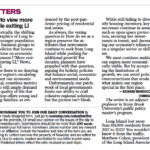
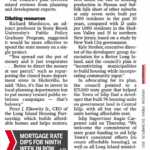

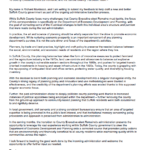
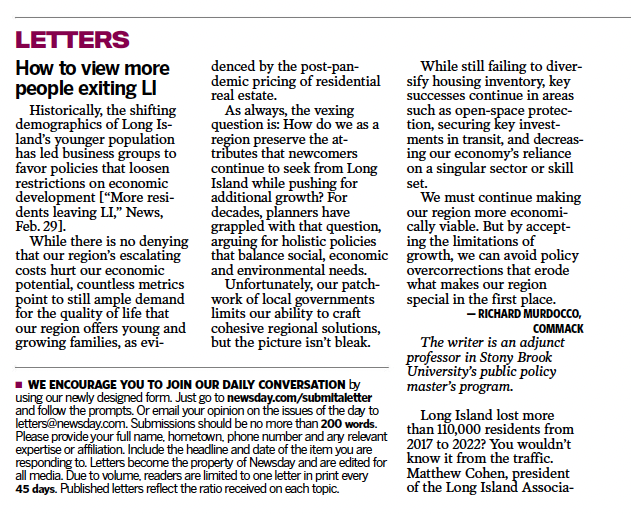
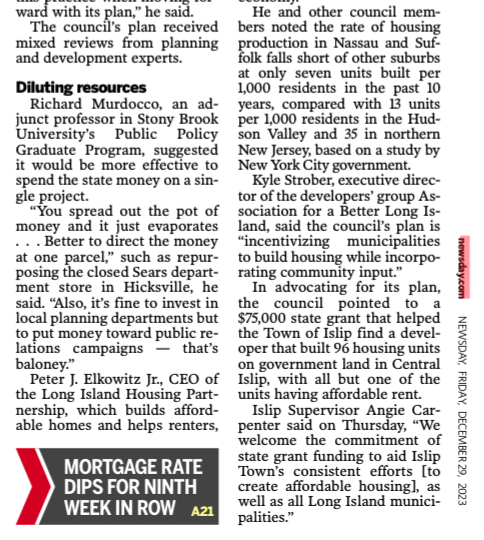
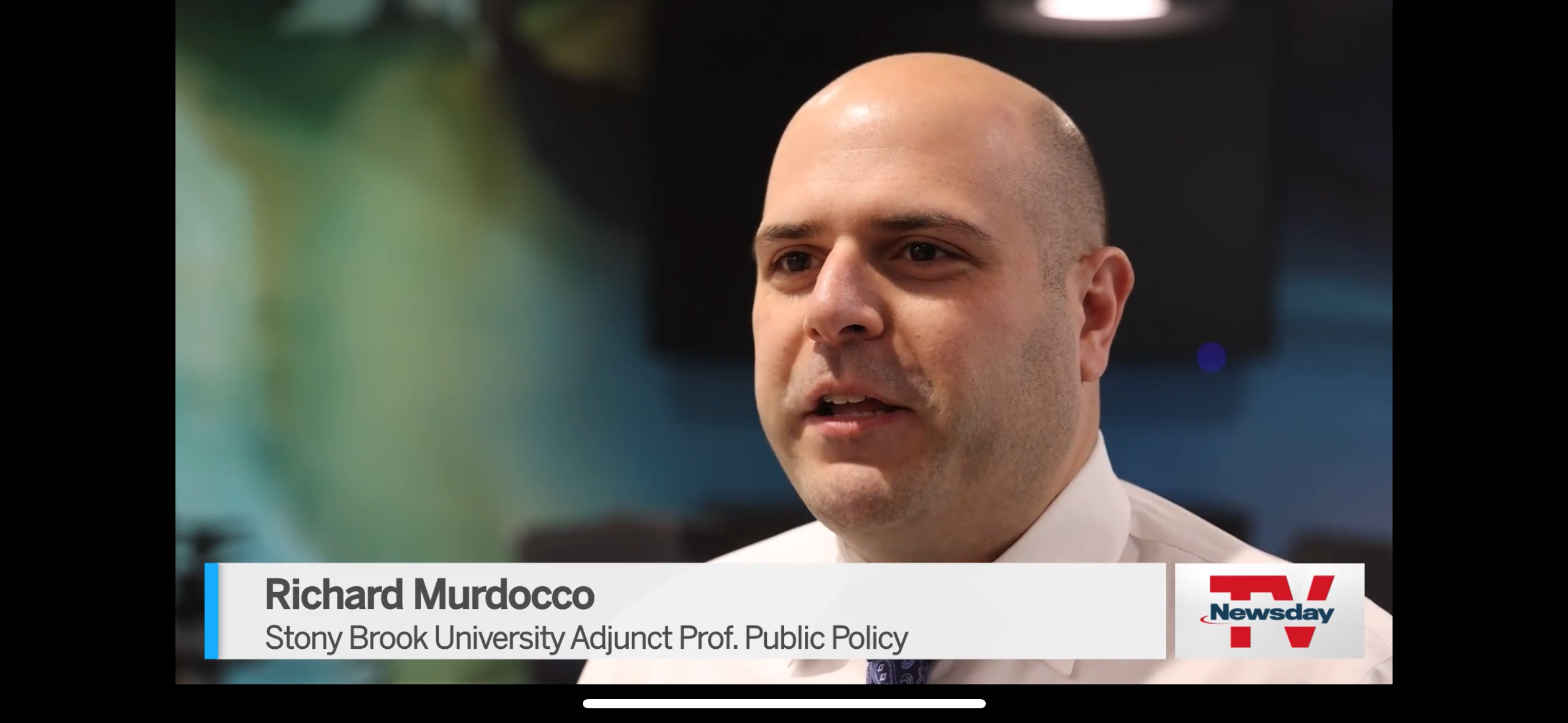
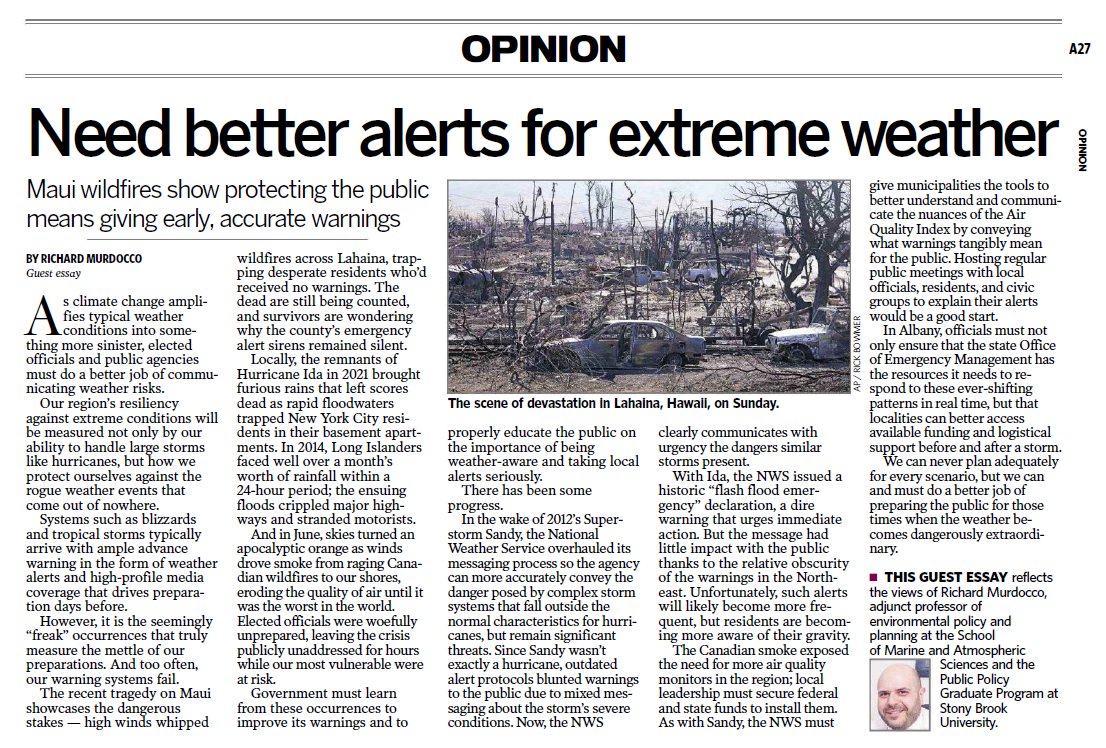
Rich, as I constantly write; local zoning doesn’t work…anywhere. New York State Constitution is the problem; which authorizes towns and villages to dictate land Use. All states with city and county zoning authority are less political and produce a freer real estate market with far less land Use restrictions. The way to produce more affordable housing is the same way the automobile market produces affordable cars; the used car market. Car companies design and manufacture market prices new cars, which causes older cars to be sold at prices far lower prices. Thus, Long Island needs to allow the development of new market prices housing. (Stop trying to build “affordable” below-market priced housing. Profits increase as developers build market prices housing and older houses go on the market at lower prices. Presto!!! Simple.